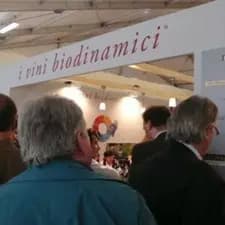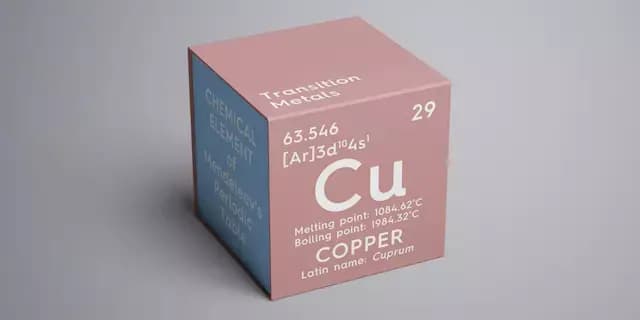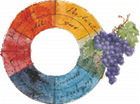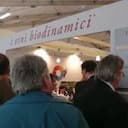Speech at the 6th Conference on Modern Biodynamic Viticulture:
“Scientific Paradigms Compared'
Medici Villa of Cerreto Guidi
When one thinks of Johann Wolfgang Goethe and wine, two aphorisms come to mind, one so well-known that it is printed not only on labels but also on gadgets and postcards:
Life is too short to drink mediocre wines.
An ambiguous aphorism, it sounds like a hymn to pleasure written by a copywriter at an advertising agency, but it hides the tragedy of his only son, August, who died at just 41 years old of liver cirrhosis. The other Goethe aphorism about wine is less known but equally evocative:
A woman and a glass of wine satisfy every need; he who neither drinks nor kisses is worse than dead.
Naturally, one can replace “woman” with “man,” but the glass of wine that inspired and nourished both body and soul of one of the greatest cultural figures of all time cannot be replaced. George Eliot said he was the last universal man. As the title of this reflection, I did not choose one of the aphorisms but the first verses of a poem that, in full, reads:
Grow fatter, greener,
leaves, in the trellis up to here
towards my window!
Bloom denser, twin grapes,
and ripen
faster and shining more full!
The maternal gaze
of the last sun broods over you,
lightly the fertile glory
of the friendly sky breathes around you;
the serene
magical moonlight breeze refreshes you,
and alas!
from these eyes
the swollen tears full
of the love that endlessly vivifies.
(Goethe, Autumn 1775)
I will not attempt an exegesis of the text, leaving everyone the pleasure of finding echoes of the fundamental themes of biodynamics. Why did I choose a poem? Because Goethe teaches us that what surrounds us — and we ourselves who perceive and live it — can be represented in many forms: by numbers and descriptions of reason and intellect, but also by the song of words. And science is no exception.
The conference title, Scientific Paradigms Compared, is borrowed from the epistemological theory of Kuhn. In brief, the American philosopher argues that scientific research proceeds in leaps. The laws that interpret reality are all consistent within a given system, but it is not certain that this system is the only one. In the era in which a paradigm prevails, scientists operating within its framework are careful not to question the foundations of their practice and the context that frames it.
In his text The Structure of Scientific Revolutions, Kuhn explains how one moves from one system to another through fractures, resulting in paradigm shifts. When a phenomenon cannot be explained, a radical change of the horizon in which it is placed becomes indispensable: for knowledge to progress, it is necessary to move to a new paradigm.
For Goethe:
Hypotheses are scaffolds that are raised before the building and removed once the building is complete. They are indispensable to the mason, only he must not mistake the scaffold for the building.
Dictum and thoughts
What is Goethe’s paradigm? We are interested in answering this question because, as we know, Steiner started from Goethe, from studies of his scientific, philosophical, and literary works.
We can say, simplifying, that if Steiner is the father of biodynamics, Goethe is its grandfather. The paradigm in which Rudolf Steiner fits is the one outlined by Goethe.
Recall that in 1882, at the suggestion of Karl Julius Schröer, his professor, and Joseph Kürschner, editor of a new edition of Goethe’s works, Steiner was tasked with studying Goethe’s scientific works. In 1886, he published his first book on Goethe’s philosophy: Fundamentals of a Theory of Knowledge of Goethe’s Worldview. In 1888, Steiner was invited to work as curator in the Goethe archives in Weimar, where he remained until 1896, writing introductions and commentaries to the four volumes of Goethe’s scientific writings and publishing in 1897 a second book on Goethe’s philosophy: Goethe’s Worldview.
In 1899, Steiner’s life began to change, as he recounts in his autobiography, thanks to the publication of the article “The Secret Revelation of Goethe” in the magazine Magazin, which dealt with the esoteric nature of a Goethe fairy tale, The Green Serpent and the Beautiful Lily. Thanks to this article, Steiner was invited to speak at a Theosophical conference and for the first time spoke publicly of his spiritual perception.
In the fairy-tale images of this story, the spiritual gaze of Goethe presented itself as the evolution of the soul from a state where it still feels estranged from the supersensible, up to the level of consciousness where life experienced in the sensible world is permeated by the supersensible spiritual world, so that the two become one.
(Steiner, The Secret Revelation of Goethe)
Let us then try to roughly outline Goethe’s paradigm. Goethe, in his worldview, besides having Spinoza as a reference point in his studies on Nature, was strongly influenced by his exchanges with the theologian Herder, who stated:
From the stone to the crystal, from the crystal to metals, from these to plants, from plants to animals, from this to man, we saw the form of organization ascend, and with it become more manifold the forces and impulses of nature, all finally uniting in the figure of man, as far as this could comprehend them.
(Herder, Ideas for a Philosophy of the History of Humanity)
Man gathers in himself all formative principles that other organisms (so-called “lower organisms”) have developed unilaterally; Nature condenses in one being what it has scattered in many classes and orders. This implies that every part of “lower organisms,” for example animals, must be found in man, albeit reduced or as ancestral residue. Nature cannot have gaps in the coherent formation of a type.
Goethe gives an important scientific contribution to this approach by discovering the intermaxillary bone in man, providing a solution (in 1784, simultaneously with the French doctor Vicq d’Azir) to a problem carried from Aristotle’s times, then revisited by Galen (both favorable), but contradicted for centuries by those like Vesalius, who claimed that man was an exceptional creature, isolated in Nature and not the last degree of affirmation of the continuum of animal forms.
Nature, for Goethe as for the Scholastics and Linnaeus, does not make leaps; he applies a morphological approach to natural sciences. The scientific investigation question becomes: what is the source of vitality and the capacity for metamorphosis of Nature?
Nature! We are surrounded and bound by her: powerless to get out, equally powerless to penetrate her more deeply. She mocks us in her dance without being asked and without warning, and rushes away with us until we are tired and fall from her arms. She always creates new forms; what is has never been before, what was will never return, everything is new and yet always old.
(Goethe, Nature)
Goethe can be considered a precursor to Darwinism, having conceived the organic as governed by the same laws that operate in inorganic nature. Living forms, according to Goethe, are the result of the metamorphosis of an archetype. Compared to Darwin, Goethe did not formulate the determining concept of selection, on which Darwin based his theory of evolution.
A second intuition is that many bones of the skull are transformed vertebrae, and in this case too, for Goethe this confirms that there is a unitary law by which Nature shapes organic forms. (These observations arose from the skull of a ram found on the beach of the Lido in Venice). This leads to the conception of an original animal type.
Naturally, this morphological approach, especially thanks to the trip to Italy, leads him to study plants and their development. Goethe concludes that plant forms are not fixed definitively to the original model but are endowed with surprising variability that allows them to adapt and transform. All parts of plants are but variations of leaves, and this applies not to just one species but to all forms in the plant kingdom, recognizing in these modifications a single primitive type. Just as it was for animals.
In short, Nature’s processes have a single common denominator and a single law, a single guiding principle. For plant life, this corresponds to a model, an ideal species, the characteristics of an original plant, the essential form of all these manifestations. At the level of concrete observation, one can only note the actual realization of the “original plant” in the plants observed in nature. (According to Goethe, this was traceable among Mediterranean species).
Each plant must therefore be considered as a moment in the metamorphosis of that essential form which Nature, as a moving law, imposes on the living being, and which cannot be rigidly schematized into genera and species.
What has a form is immediately transformed again; and we, if we want to acquire a living perception of nature, must remain mobile and plastic, following the example she gives us. Every living being is not a single individual but a plurality; even appearing as an individual, it remains a set of living, autonomous beings that, equal according to idea and by nature, appear empirically identical or similar, different or dissimilar.
(Goethe, The Metamorphosis of Plants)
Goethe’s journey to Italy leads him to study color phenomena. For him, our country was the synthesis of nature and art, past and present, spirituality and sensuality. Besides the purity of the skies and the hues of the landscape, the visit to the Sistine Chapel is decisive.
The basic question is: what are colors? Goethe answers by consulting painter friends, conducting laboratory experiments, and producing a “Theory of Colors,” to which he gives more importance than to all his literary works.
For what I have done as a poet, I am not proud at all: more excellent poets lived before and will live after me. But being the only one, in my century, to know the truth in the science of colors, of this I am very proud.
(Goethe, Theory of Colors)
The starting point is that pure and simple sensory perception is not capable of grasping the richness and complexity of Nature. The centrality of the perceiving subject, as declared by Goethe, simultaneously refers to epistemological and ethical issues. Color, understood as atmosphere and bodily experience, but also in its sensible and moral aspect, introduces us to an anthropological vision of experience and existence.
Goethe’s theory of colors, despite his pride, left contemporaries indifferent; this hurt the author particularly, who would have liked a dialogue, but this did not happen because his work belonged to a “different” paradigm—that is, it did not fit into the Newtonian system. It was a new paradigm. Here is what Martin Bansfeld writes about this:
According to Goethe, colors are not parts but actions and passions of light. Weizsäcker believes that this statement is fully in harmony with quantum physics. The relationship between part and whole in quantum physics could precisely be expressed by stating that the isolable parts are always actions and passions of the whole. Along with classical atomism, the classical model of causality must also be discarded: in quantum physics, only probabilistic predictions are possible on single objects.
Goethe reproached Newton for not wanting to recognize light in its purity; conversely, Goethe was reproached for not understanding the meaning of the principle of causality for naturalistic thought. Meanwhile, thanks to quantum physics, Goethe’s concept of light seems to have become plausible, and the absoluteness of the causality model has weakened: here we are again ready for Goethe’s scientific conception.
Bansfeld, Color is Nature Conformed to the Sense of the Eye
And we add: we are thus ready for Steiner’s theories. Another paradigm is emerging on the horizon.
But all this is not only interesting for its conclusions. The theory of colors, which made Goethe so proud, contains a fundamental issue that goes beyond the problem of light; or better, playing with a semantic shift, the essay also deals with light in a metaphorical sense—as knowledge—and inserts itself strongly in the fundamental debate between objectivity and subjectivity of knowing. This is the real point of conflict with Newton.
Naturally, this comes from Kant and perfectly describes the transition from Enlightenment culture to Romanticism.
Subjectivity in science does not mean that everyone has their own science, but that man is included and integrated in the research, responsible for it, linking the progress of science to ethics.
For Goethe, the world of nature and the world of spirit are not separate but connected; nature, in his view, can be known through the spirit that lives within man.
— Steiner, Autobiography
Steiner states that Goethe’s works had created in him the deep conviction that Galilei’s work on inorganic matter corresponded to Goethe’s work with reference to the organic world. With his theory of metamorphosis, Goethe had conceived the organic processes of nature in spiritual terms. Goethe’s scientific method feeds on the controversies of science, which teach the art of not stopping at overly certain knowledge; the opposite polarities produce the movement of research, which otherwise would stop. And at the center of this flow is always man with his ethics.
Returning to the initial question: what is Goethe’s paradigm? It can be roughly summarized as follows, in his own words:
If, with a happy balance of energy and skill, it will be possible to raze to the ground that Bastille (the reference is to Newton’s theories, but it applies to all theories linked to the mathematization of natural sciences) and gain a free space, it will be far from our intention to immediately clutter it by building a new building. Rather, we intend to use it to offer a beautiful succession of multiple forms.
— Goethe, Theory of Colors
For Goethe, knowledge, in all fields, occurs within the relationship between subjectivity and objectivity and their mutual and radical compromise. Science must become both mystical and methodical, living from the tension of the two poles of the living unity: rules and intuition.
But knowledge does not exist if there is not a living being who, besides perceiving, feels what goes beyond himself and what is around him. Alongside the centrifugal force of the continuous change of existing forms, there exists a counterbalance: the instinct of specification, the tenacious capacity to persist of that which, in becoming, has become reality. We could say the original imprint, the first sign of change.
The ideal would be to understand that every real element is already theory.
— Goethe, Maxims and Reflections
Now, for reasons of time and space, I must close and, with a double somersault, reconnect one of the threads underlying this reflection: the problem of disciplinary rules.
What I have tried to retrace and that I have generically called Goethe’s paradigm, from which biodynamics originates, can at least partially explain why it is so difficult to fix the biodynamic method in a disciplinary rulebook.
But perhaps we should try to imagine a new way to write a disciplinary rulebook, perhaps thinking of it as a living, moving text, enriched daily by practices as well as theoretical speculations.
To conclude, one last maxim by Goethe:
Studying nature we are pantheists, poetizing polytheists, ethically monotheists.
— Goethe, Maxims and Reflections
This leads us to place research and the sharing of results while taking into account a final consideration: a purely mechanistic conception of knowledge and life inevitably produces a separation between ethics and scientific-technological research, risking—as we see in everyday life—that progress is perfectly functional to the economy.
An economy that, in the new millennium, with globalization, digitalization, and the virtualization of wealth, has broken the bond it had always had with the production of goods related to the life of human beings and their well-being. The world today is dominated by a financial economy that has lost sight of man as subject and pinnacle of the metamorphosis of forms. The tendency is that finance, with its objective mechanisms (only numbers and statistics matter), has definitively succeeded in separating real lives from their abstract representations.
Bibliography
-
AAVV – Goethe Scienziato, edited by Giulio Giorello and Agnese Grieco, Einaudi, 1998
-
Baioni, Giuliano – Goethe, Einaudi, 1998
-
Wilson, Colin – Rudolf Steiner, Longanesi, 1985
-
Sterpellone, Luciano – Goethe e la Medicina, Edizioni Medi, 1998
La normativa sul vino biologico: cosa ne pensiamo
Dichiarazione importante









